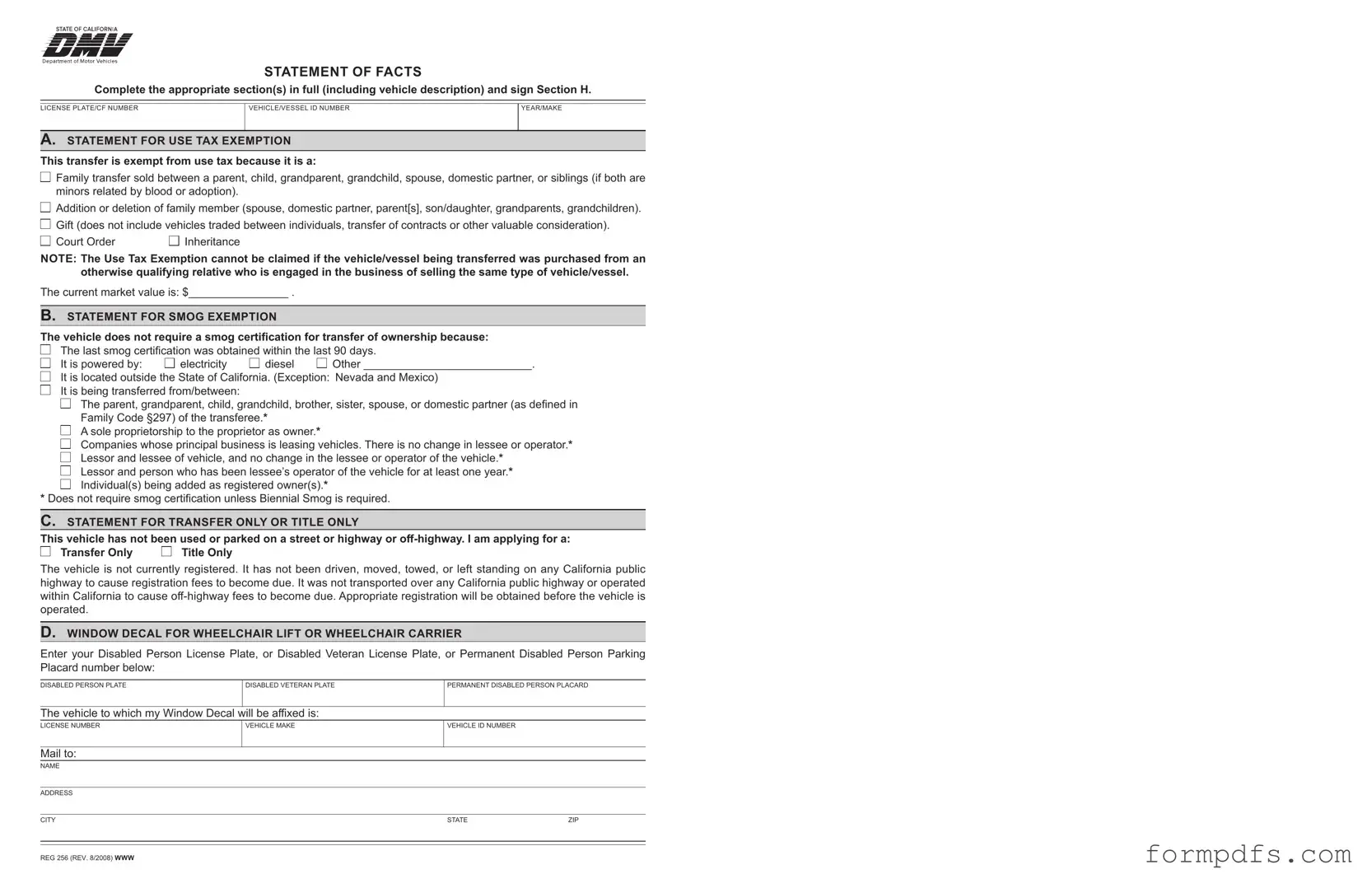What is the purpose of the DMV Reg 256 form?
The DMV Reg 256 form, also known as the Statement of Facts, is used to provide necessary information for various vehicle transactions in California. This form allows individuals to claim exemptions from use tax, smog certification, and to document changes in vehicle ownership or details. It is essential for ensuring compliance with state regulations during the transfer of vehicle titles.
Who can claim a use tax exemption using this form?
Individuals can claim a use tax exemption if the vehicle transfer falls under specific categories. These include family transfers, gifts, court orders, and inheritances. Notably, if the vehicle was purchased from a qualifying relative engaged in selling vehicles, the exemption cannot be claimed. The current market value of the vehicle must also be noted on the form.
What conditions allow for a smog exemption on the DMV Reg 256 form?
A vehicle may be exempt from smog certification if the last certification was obtained within the last 90 days, or if it is powered by electricity or diesel. Additionally, transfers between family members, certain business situations, or vehicles located outside California may also qualify for this exemption. It is important to check the appropriate box on the form to indicate the reason for the exemption.
Can I use the DMV Reg 256 form for a title-only transfer?
Yes, the DMV Reg 256 form can be used for a title-only transfer. In this case, the applicant must indicate that the vehicle has not been used or parked on public highways and that it is not currently registered. This ensures that registration fees do not accrue while the vehicle remains unoperated.
What information is required to complete the DMV Reg 256 form?
To complete the DMV Reg 256 form, individuals must provide detailed information including the vehicle description, license plate number, and vehicle identification number. Depending on the exemption being claimed, additional details about the transfer type, current market value, and any changes made to the vehicle may also be required. Finally, the applicant must sign the form to certify that the information provided is true and correct.
